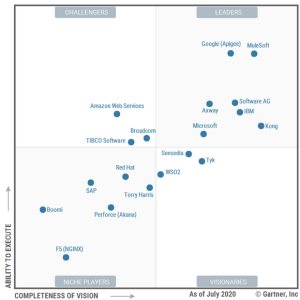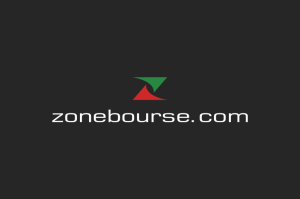
Cloud computing has offered endless business possibilities and is undoubtedly becoming the catalyst for driving digital transformation for businesses worldwide.
However, the rapid cloud adoption doesn’t guarantee robust data security and privacy for organizations and customers since cybercriminals try to sneak into business networks with new attacks.
On the other hand, cloud security and privacy regulations are becoming more stringent. And various states and countries have already released a list of security features that can’t be compromised.
What’s more worrisome is that most organizations aren’t aware of the stringent cloud security regulations and their importance, which may entitle them to hefty fines for non-compliance.
Undeniably, the dynamic nature of cloud computing introduces unique data and privacy challenges that require careful consideration and proactive measures to ensure robust security.
Let’s uncover valuable insights into the challenges associated with cloud security and regulations and learn how businesses embarking on a digital transformation journey could securely navigate their overall growth.
This article aims to provide clear insights into the challenges associated with cloud security regulations, offering practical knowledge to navigate the intricate landscape.
What are Cloud Security Regulations? Why Shouldn’t Businesses Ignore Them?
Before learning how to reinforce your cloud security, it’s important to understand cloud security regulations and how they impact your business.
Cloud security regulations are the set of standards, rules, and compliance requirements that strictly govern data and information protection, ensuring the security of cloud computing environments.
These cloud regulations are intended to mitigate risks, safeguard sensitive data, and maintain the privacy and integrity of stored information.
And when we talk about how these regulations impact businesses leveraging the cloud, they provide a framework for companies to adhere to the best practices in cloud security and mitigate the potential impact of data or privacy breaches for both organizations and consumers.
Hence, if you ignore these regulations, your business might be vulnerable to several threats, including data breaches, identity theft, and data loss.
Furthermore, adherence to these regulations ensures that businesses are well-prepared to tackle evolving cyber threats and data privacy challenges in an increasingly interconnected digital landscape.
Your Consumers Are Aware Of their Privacy

We’re all sharing our personal information details everywhere online, and sure, no one exploits the same. And the same is the case with your clients. They are concerned about their privacy and details that can be exploited.
Yes, your consumers know what information could be compromised and what privacy policy and data regulations their service provider is adhering to.
If you’re a cloud service provider or leveraging the cloud to serve your customers, deploying adequate cloud security while complying with the security standards/regulations is essential.
And if you fail to do so, and in the worst-case scenario, you fail to preserve the privacy of your customers, they won’t be able to trust you again, and you will also lose potential customers.
Let’s look at some aspects of cloud security regulations and how businesses can overcome non-compliance challenges.
Data Privacy: Safeguarding Sensitive Information
Without data privacy, you can’t cater to your customers online. And if you’re leveraging the cloud, you must be highly cautious since cybercriminals target poor cloud deployments.
Whether it’s a shared cloud infrastructure or a single-tenant cloud infrastructure, data privacy has become the need of the hour ever since data privacy laws became more stringent.
Businesses must ensure they’re handling personal and sensitive data according to the various privacy laws, including General Data Protection Regulation (GDPR) and the California Consumer Privacy Act (CCPA).
And failure to comply with these regulations could eventually lead to severe financial penalties and reputational damages. Also, if an organization hasn’t yet deployed stringent security mechanisms for improving cloud security and faces a data breach, no consumer would ever wish to consider them for their services.
Let’s figure out the challenges of data privacy in the cloud and understand best practices for compliance management for organizations leveraging the cloud.
Data Residency: Navigating Geographic Boundaries
Most cloud centers are operated in different geographical locations. And these remote cloud locations could raise concerns about data residency or localization requirements for some states.
Certain regions of industries may have specific regulations that govern where and how data can be stored and processed. And if you need to operate in those regions, you better understand their data localization requirements and then choose your cloud computing requirements and service provider.
For instance, if a business needs to serve the citizens of Canada, it needs to set up a server within the geographical boundaries of Canada to comply with its data localization norms. Else, the organization needs to deploy its applications by taking rented servers within Canada.
Access Controls: Protecting Against Unauthorized Access
Access control is one of the essential aspects of protecting sensitive information on the cloud since most cybercriminals may bypass weak layers of cloud authentication and access information.
Adding multiple layers of authentication security through multi-factor authentication can help reinforce access control security.
Most applications deployed over the cloud offer 2FA for better authentication security. But for high-risk situations, relying on risk-based authentication security practices is always a great idea.
Risk-based or adaptive authentication ensures a strong authentication layer is automatically added to the authentication process when the system detects any unusual login attempt.
This kind of authentication security helps secure user information and sensitive business data even if two or more layers of authentication have been compromised.
Encryption: Strengthening Data Security
While encryption is one of the most common data security practices, how it’s deployed over the cloud makes the real difference.
Cloud security regulations often require encryption of sensitive data both in transit and at rest. This means data must be encrypted while it’s being retrieved/transmitted and when it’s stored.
Many cloud regulations also demand data encryption and a Zero Trust security approach that reinforces data security.
To Conclude
As organizations adopt cloud technologies, understanding and complying with cloud security regulations become necessary.
Many organizations shifting to the cloud rely on conventional security mechanisms that aren’t robust enough to deal with modern threats. Hence, businesses must understand the importance of incorporating cloud security per global data security and privacy regulations.
With this approach, organizations can protect their customers’ information, which further builds trust and mitigates the risks of privacy breaches.
By Rakesh Soni


